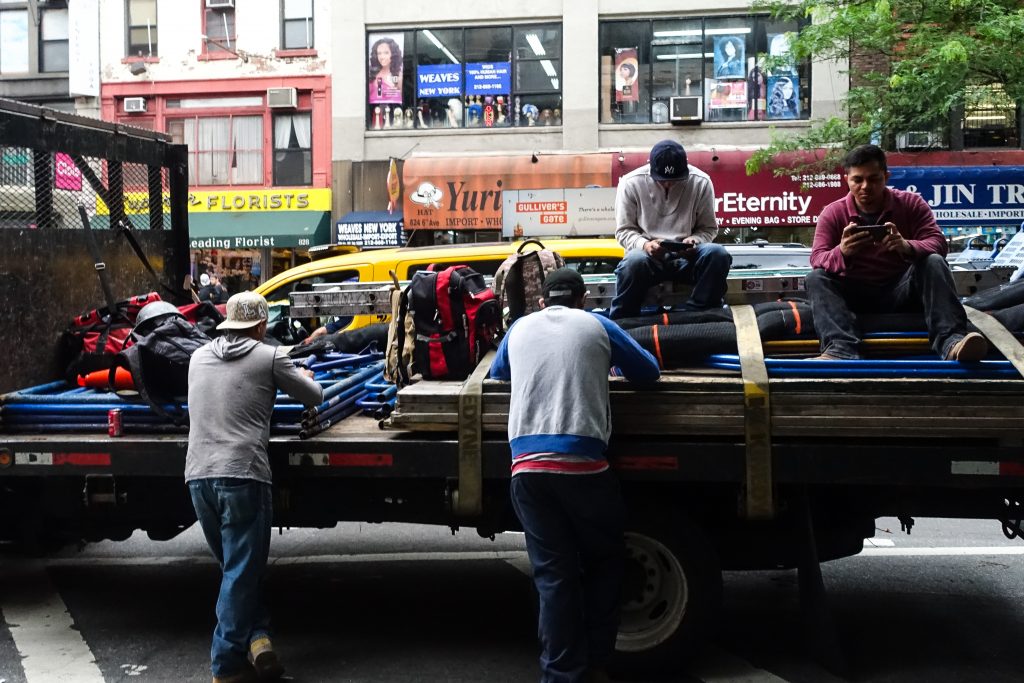 “Harwood” must be short for “Hard to Kill.”
“Harwood” must be short for “Hard to Kill.”
Despite receiving the death penalty from the Trump administration and the House of Representatives last year, the Susan Harwood Training Grants are back — and stronger than ever — thanks to the Senate. (The Trump and the House are trying to kill the grants again in FY 2019 — but once again, that is unlikely to happen.)
OSHA announced last week that the 2018 Harwood Grants are ready. “A total of $10.5 million is available for nonprofit organizations including community and faith-based organizations, employer associations, labor unions, joint labor/management associations, Indian tribes, and colleges and universities.”
And when I say “stronger than ever,” I mean that the long-term “Capacity-Building” Grants are back. OSHA had eliminated those last year, focusing only on one-year Targeted Training Grants, but the last appropriations bill (thanks to the Senate bill) required the agency to reinstate the Capacity-Building grants.
Capacity Building Grants should cover “training workers and/or employers on identifying and means of preventing serious safety and health hazards identified by OSHA through the DOL’s Strategic Plan, as part of an OSHA special emphasis program, or other OSHA priorities.” That includes “educating workers on their rights and educating employers on their responsibilities under the OSH Act,” and focusing on workers in small businesses, and at-risk and/or low-literacy worker populations, including temporary and warehouse workers. Grants can also cover the provision of technical assistance to employers and workers and the development of materials to train and educate workers.
Targeted grants can cover one of 18 subjects:
1. Chemical hazards/hazard communication
2. Confined space
3. Electrical
4. Ergonomics
5. Excavation
6. Extreme temperatures (heat or cold)
7. Fall prevention in construction including residential
8. Machinery and machine guarding
9. Powered industrial trucks
10. Respiratory protection
11. Silica
12. Walking working surfaces
13. Workplace violence
There is also funding for development of training and educational materials.
Public Employee Eligibility
[UPDATE: OSHA has just clarified their seemingly conflicting statements:
“This grant program allows for training public sector employees whose activities include occupational safety and health responsibilities related to their co-workers in a state or local agency. No other public sector employees, including OSHA approved State Plans and Consultation employees, are eligible for the training grants.”
So the old policy seems to be still in effect. ]
One outstanding question is whether organizations that train public employees can apply for grants. Public employees are not covered by OSHA except in the 26 states that have state plan programs. Traditionally, OSHA has allowed public employees to be trained under the Harwood grants as long as they have occupational safety and health “responsibilities,” e.g.”occupational safety and health trainers; program managers; committee members; or employees responsible for abating unsafe and unhealthy working conditions for their organization.” And this application confirms that condition.
But then later, the grant application states that “Ineligible trainees are public sector employees including federal, state, and local government employees, even though they may have occupational safety and health protection if they work in a state with an OSHA-Approved State Plan.”
Confused? Me too.
Inquiries have been made concerning public employee eligibility and we’ll let you know as soon as OSHA clarifies the instructions. Needless to say, public employees get hurt and die the same way the private sector employees do. And need training just as much.
Act Fast
But act fast. Because it took the agency so long to make the announcement, grant applications must be submitted online no later than 11:59 p.m. EDT on Sunday, Sept. 2, 2018. If you’ve never applied for a Harwood grant before, make sure to register (EARLY!) in the System for Award Management, and possess a “D-U-N-S” number. D-U-N-S is a unique, nine-digit identification number for each of a business’s physical locations. And do not — I repeat — do not wait until the last minute. Follow the instructions carefully. OSHA doesn’t look kindly at “My dog ate my application,” or “My computer decided to crash at 11:58.”